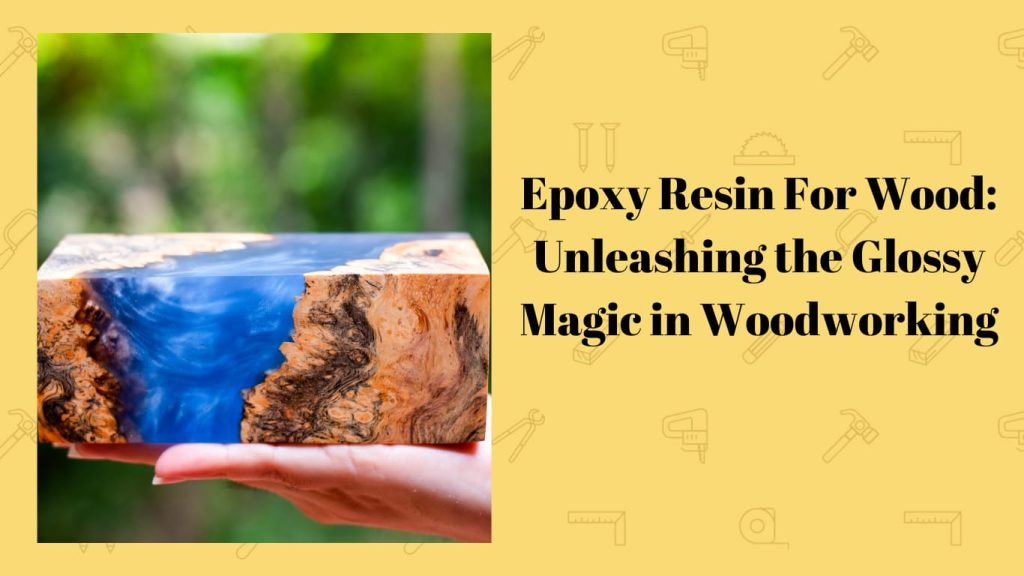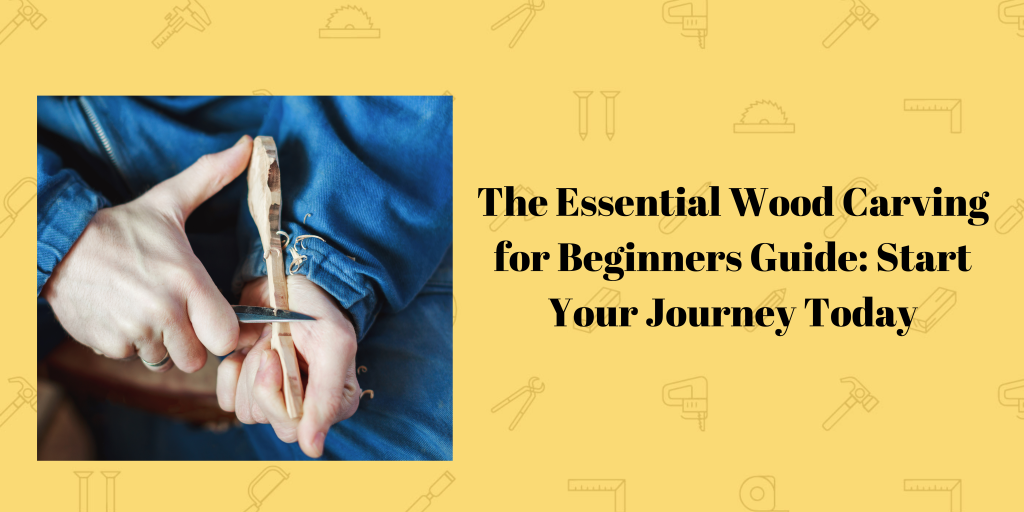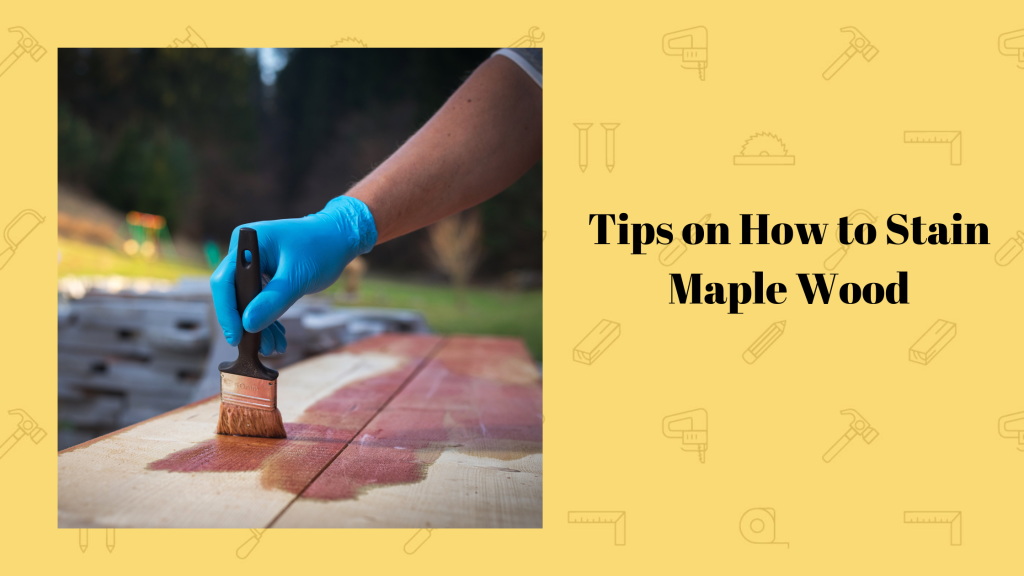When you use epoxy resin for wood, there’s always magic to be made. Whether it’s to immortalize delicate art or seal pesky screw gaps in wood, epoxy has a forever place in the toolbox. So, knowing how to use epoxy for wood is pretty essential.
After learning to make timeless pieces like stained maple wood, you should take the extra mile to preserve it. Epoxy resin fits right in because it affords the woodworker different ways to enhance his pieces. However, many wood enthusiasts barely understand the unique art of epoxy on wood.
Read on as we explore the chemistry of epoxy resin and wood, how to choose the right epoxy resin for wood, and some common rookie mistakes to avoid.
What is Epoxy Resin?
Epoxy resin is an incredibly durable material used in construction and woodwork. It is strong and durable, making it a powerful adhesive for binding wood in projects.
Epoxy is so strong that building contractors use it to seal cracks and gaps in underground pipelines. So, it naturally has a place in the woodworker’s toolbox.

Why Use Epoxy Resin for Wood?
Asides from epoxy’s Popeye-like strength, it has several benefits as a wood adhesive. Here are some reasons why woodworkers always keep a tube of epoxy:
- Epoxy acts like a sealant, protecting wood from moisture, mold, and pests. Rotted wood repair epoxy serves as a method of salvaging weak and rotted wood.
- Epoxy is an elite product for filling cracks and screw gaps in wood. It stays locked in and doesn’t yield to environmental stress or wear.
- Ever seen an epoxy river table? Epoxy covers wood in a beautifying gloss. The sheen improves its appearance and increases its value.
- Epoxy makes wooden furniture resistant to stains and eases cleanup. Staining and finishing wood with epoxy immortalizes the stained wood for ages.
Types of Epoxy Resin for Wood
There are four main types of epoxy resin for wood, varying by their consistency and application. Among other things, the viscosity of epoxy resin often determines how woodworkers utilize it.
Here are the four major forms of epoxy resin for wood in descending order, according to their viscosity:
- Casting epoxy: This epoxy has a thin gel-like consistency and is ideal for encapsulating artwork in a mold. It also has a much higher heat resistance than other types of epoxy. I’ve dipped birthday roses in casting epoxy to preserve them, and I still have them today.
- Laminating epoxy: Laminating epoxy is also a gel, but it is a lot thicker than casting epoxy. It is also really strong, so you’ll find building contractors laminating wood for roofs, walls, and decks.
- Epoxy paste: Epoxy paste is thicker than laminating epoxy but not thick enough to be pliable. It can serve as an adhesive even though it works as a good wood filler.
- Putty Epoxy: Putty epoxy is easily the thickest form of epoxy. It is moldable and pliable, making it easy for woodworkers to fashion the putty into screw holes and cracks.
How to Use Epoxy Resin on Wood: A Step-by-Step Guide
We now know the types of epoxy available for our projects and maybe even pick a product. The next thing we need is a step-by-step breakdown of how these methods work to allow you to ace epoxy on the first try:

Step 1: Prepare The Wood
The first step to using epoxy resin on wood is to prepare the wood surface. Sanding helps to remove debris and wood fibers that can interfere with the epoxy. You can use regular 220-grit sandpaper, but I find that an orbital sander won’t leave stress marks on the wood.
Step 2: Whip Up The Epoxy Resin
Mixing the epoxy resin is the second and most crucial part of this process. It consists of two parts – the epoxy and hardener, which need a suitable ratio to achieve the right viscosity. So, you should check for instructions before mixing.
I’d recommend using nitrile gloves and disposable cups to prevent direct contact with the epoxy resin.
Step 3: Pour The Epoxy Over the Wood
Starting in the middle, pour enough epoxy to cover the wood in a thin layer. Don’t bother about the first layer’s evenness; we’ll get to that soon. Remember to work fast because epoxy hardens quickly after pouring.
Step 4: Even it Out
Remember the unevenness; it’s time to tackle it. Use a foam brush to work the epoxy from the center puddle and around the entire surface. Make sure you’ve coated the entire surface and wipe off any excesses with the same brush.
Step 5: Get Rid of The Bubbles
Bubbles in epoxy resin can be a real heartbreaker, but they are more common than you think. Simply grab a heat source, like a hand dryer, and blow 10 inches away from the epoxy. Run the hand dryer back and forth across the epoxy, and the bubbles should soon disappear.
Step 6: Time to Dry
After getting rid of those pesky bubbles, your epoxy needs about 4 hours to rest. It won’t be fully hard, but you should notice a tacky consistency.
If your project needs more coats, now will be the time to go in with another coat. Otherwise, let it sit till it hardens.

Common Mistakes When Using Epoxy Resin on Wood and How to Avoid Them
Like most new projects, it isn’t uncommon to make a rookie mistake (or 10). While the mishaps are often small, we pay for them in the epoxy’s final consistency.
Here are a few avoidable mistakes to watch out for preparing your epoxy resin for wood:
- Measuring the ingredients inaccurately: Like cooking, inaccurate ratios of resin and hardener can yield a hot mess. Perfect epoxy requires you to use brand-specific hardeners and measurements, or else it won’t set
- Low temperatures: Epoxy thrives at room temperature, and cooler temperatures make it cooler and harder to ply. Luckily, cold epoxy can still be restored by dipping it in a warm bath to activate it. Meanwhile, the temperature of your resin room should be between 75-85 degrees Fahrenheit.
- Undermixing: When dealing with epoxy, there’s a concept of mixing it too little, delaying its activation. Instead, it thoroughly for 3 minutes to ensure it blends well.
- Over-torching: When too many bubbles are trapped in your epoxy resin, you can use a torch to remove it. But, inappropriate and prolonged use of torches can cause the epoxy to yellow permanently.
- Adding too much colorant solution: A colorant solution is a substance for coloring resin, but it also can delay the curing process. A pro-tip is to measure colorant as only 6 percent of the entire solution.
Best Practices for Applying Epoxy Resin on Wood
Beauty comes with cautiousness, and epoxy is no exception. Here are some bonus tips to help you use epoxy resin for wood projects:
- Don’t eyeball the measurements, or else the hardener will mess with the epoxy.
- Use nitrile gloves to avoid directly touching the epoxy solution
- Keep your leftover epoxy at room temperature, or it’ll thicken and become harder to use
- When you remove bubbles from the epoxy resin, keep your heat source at least 10 inches away to avoid burning.
- Don’t be too generous with your colorant. Ensure it doesn’t constitute more than 6 percent of the entire solution, and add it in after mixing the epoxy and hardener.
Frequently Asked Questions
How Do You Apply Epoxy Resin to Wood?
There are different methods of applying epoxy resin to wood, and they vary by the epoxy’s viscosity. For example, casting epoxy will often come in a plastic bottle with an application tip. And putty epoxy typically comes in a small tub, allowing you to apply it with your hands or a putty knife.
Can I Use Epoxy Resin on Any Type of Wood?
While you’ll need to choose the right epoxy type for your project, epoxy resin will pretty much bond to every type of wood. For examining, when filling wood cracks with epoxy, there aren’t any specifics for the wood.
What Are the Benefits of Using Epoxy Resin for Wood?
Using epoxy resin on wood seals the surface and protects it from moisture, scratches, and pests. It also adorns with a shiny glaze that enhances the wood’s beauty.
How Do I Choose the Best Epoxy Resin for My Wood Project?
Choosing the best epoxy for the wood project involves matching the project with the resin’s viscosity. For encapsulating and sealing in, you’ll want to use casting and laminating epoxy. Otherwise, epoxy paste and putty epoxy are perfect for filling gaps and screw holes in wood.
What Are Common Mistakes When Using Epoxy Resin on Wood?
Some of the most common resin mistakes are inaccurate measurements, cold temperatures, and undermixing. Each of these issues affects the epoxy and makes it virtually unusable.
That’s The Secret
Epoxy is the mystery mouse tool in every woodworker’s toolbox. It is perfect for encapsulating, laminating, and refilling wood projects. So, when you use epoxy for wood, the project is durable and stunning.
Tell us about a project where you whipped out the epoxy for wood. How did it go? Share this resource with a woodworker who’d love to up their game with epoxy.
*This post may contain affiliate links. Please see my disclosure to learn more.



